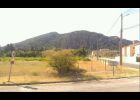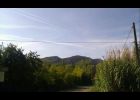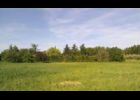Coloured technical images: On the Role of Colour in Vilém Flusser’s Work
Flusser wrote about colour from different points of view His interdisciplinary approach defies clear-cut borders by contaminating that which is generally thought to be separated. It rather seeks to create complex syntheses that play a privileged role in his texts on colour. In the same way, colours do not stick to the forms into which one tries to imprison them. They overflow, blend and bleed into each other. This essay focuses on four aspects of colour: the connection of black and white in photography and discourses on “racial” differences; the role of greyness and its relationship to colour luminosity in the description of culture and politics; the presence of colour in nature, landscape, and the animal world; Flusser’s use of colour in a redefinition of the notion of technical images in the context of the project of the Casa da Cor.
Flusser in Robion
Robion, a small town in the Provence of southeastern France, was the second exile of Vilém Flusser and his wife. They lived there from the early 70s until his death in the early 90s, and after living for a long period in the city of São Paulo. This new but well known cultural landscape attracted a lot of philosophers, writers and artist and represented for Flusser a so called anti-Brazil, some kind of paradise in a strait opposition to the “desert” landscapes of Brazil. Here he found a prosperous landscape where several points of his thinking where connected in natural and cultural ways.
Vom „Chaos der Farben“ zum blot. Konzepte von Bilderfindung und Gedächtnis bei Alexander Cozens und Samuel van Hoogstraten
This article discusses aspects of artistic inventio in landscape painting in the 17th and 18th centuries with a special interest in the changing role of the cultural understanding of memory and its growing influence on art theory. The main focus is on two discourses about artistic invention –an artistic anecdote by the Dutch painter and theorist Samuel van Hoogstraten (1627–1678) that is part of his treatise on painting Inleyding tot de hooge schoole der schilderkonst (1678), and the blotting system, which the English landscape painter Alexander Cozens (1717–1786) presents in New Method of Assisting the Invention in Drawing Original Compositions of Landscape (1785/86). The article argues that while the earlier text already reflects an increasing awareness of a fundamental shift in traditional concepts of human memory, the latter one finally demonstrates new paradigms of scientific systematization, which gave rise to a different model of creative imagination.
Mensch oder Landschaft – was war zuerst da? Antworten aus Vilém Flussers Vogelflüge
The essay is dedicated to the relationship of nature and culture. Landscapes are formed by natural and cultural influences. Cultural influences include two components: the changes on the land made by men and the changing ideas about landscape. Landscapes are concepts; therefore they cannot exist without men. Flusser explores this theme by describing his visit to the French Jura Mountains. He outlines how, first animals and later men used the Ofenpass, a pathway in the Alps. Separated river valleys were transformed from natural areas to landscapes, which can be regarded as men’s homes.



